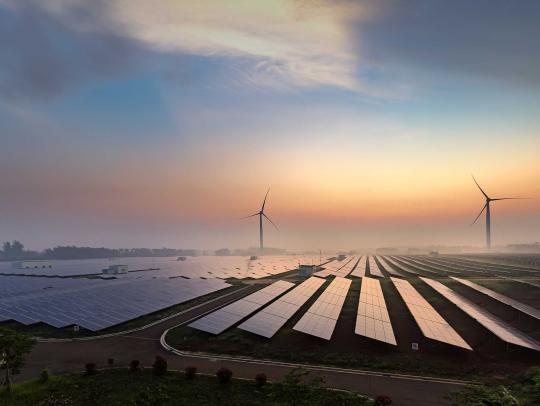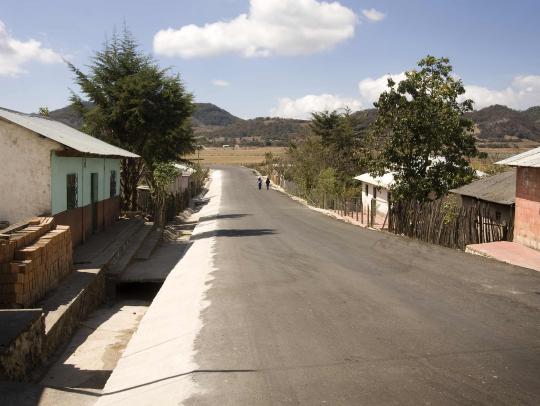Redefining The Next Generation Of Connectivity For Government Organisations

The new decade for the satellite industry is quickly being defined by Non-Geostationary Satellite Orbits (NGSOs), which carry exciting new capabilities to power the next generation of connectivity and the rise of new digital technologies. How will these new satellite constellations change connectivity for government organisations in the Asia-Pacific region?
The Next Phase of Satellite Technology
The Geostationary Earth Orbit (GEO) satellite constellations in orbit today provide global coverage, and enable robust Ku-band services leveraging flexible spot-beam technology from 36,000km above earth. However, these constellations have a longer round-trip delay that can be higher than 400ms. This new decade promises to be characterised by a new evolution in satellite technology: NGSOs. [1] NGSOs would pave the way for 5G mobile technologies, and the Internet of Things (IoT) to build smart societies, including intelligent transport systems, e-government, tele-education, e-health, e-logistics, smart energy, smart agriculture, in both developed and developing countries. [2]
SES has been at the forefront of this latest industry development as the first company to use a NGSO system to deliver fibre-like broadband services in 2013. Located about 8,000 km from the earth’s surface, the O3b MEO constellation provides low latency performance of less than 150ms, enabling the delivery of high-performance data networks and solutions, such as the cloud, worldwide. This enables critical government communications and data sharing between agencies, workers in the field and with diplomatic organisations to be conducted on secure, cloud-ready networks from ISR platforms.
In the event of natural disasters or planned incidents, governments and partner organisations need reliable, high-quality communications networks and access to critical systems to ensure that first responders are coordinated in their efforts. SES’s Humanitarian Assistance & Disaster Response Solutions, which are tailored to disaster-prone areas, deliver high-quality, highly reliable connectivity for disaster response and recovery teams before, during, and after a crisis occurs.
The unique, high-throughput O3b MEO constellation has helped SES change lives by connecting people in nearly 50 countries, including Burkina Faso, and enabling government and humanitarian agencies to restore connectivity for the millions affected by natural disasters in countries such as Peru and Puerto Rico. [3] In fact, disaster resilience is increasingly reliant on space and geospatial information. In 2018, the third Ministerial Conference on Space Applications for Sustainable Development in Asia and the Pacific pledged to continue its collective work to use this type of information to reduce disaster risk. [4]
Key Considerations for Governments in Asia-Pacific
The Asia-Pacific region is highly diverse in terms of population and economic development meaning that no two countries face the same circumstances. Governments must be able to respond quickly to crisis situations, access communications during national security operations, and deliver services to citizens. Reliable, secure connectivity is of vital importance to achieving these objectives. As a result, addressing evolving threats and bolstering resilience while overcoming the limitations of GEO satellite communications is a high priority. Governments need these networks to be secure to provide critical communications links to their agencies abroad and at home at a time when threats to conventional satellite communications systems is increasing as never before.
SES supports a variety of government organisations, such as international security and development organisations, national defence, border patrol, resource management, and local fire and police departments, in their efforts to use their communication networks to be responsive, and to effectively use taxpayer money for missions. The low latency, high throughput network capabilities of our O3b MEO constellation provides unprecedented levels of connectivity and enables government organisations to have quicker response times and higher operational efficiency. However, now that it has changed the way that our customers in the government sector can manage their most challenging operations, they are looking to expand the reach of these operations to multiple locations at a time. With the next generation MEO system, SES will be able to support multiple locations at the same time, in a scalable, affordable, and secure way. [5]
The Next Generation of NGSO
SES is currently developing the next generation NGSO broadband system. Called O3b mPOWER, it will provide multiple terabits of throughput globally to drive digital transformation and cloud adoption virtually anywhere on the planet when it is operational in 2022. It builds on the new dimensions in connectivity and performance delivered by the existing O3b MEO constellation, which has served 60 governments in 30 countries since the launch of the first eight satellites in 2014.
The highly flexible O3b mPOWER constellation comprises ultra-high-capacity, low-latency, high-power MEO satellites, capable of up to 10Gbps of capacity to meet the demands of governments. [6] For government organisations, this means that they will have more flexibility in terms of bandwidth allocation. Bandwidth can be dynamically allocated across multiple sites and remote locations, minimising under-used capacity and improving cost efficiency. This expands connectivity to support a full range of government security and citizen services—from border patrol and elections monitoring to e-health and e-learning.
Jack Deasy, SES’s VP of Market Segment Solutions predicts that O3b mPOWER will, “very quickly become the core element of all government networks. It will be fundamental to any government activity that requires mobility, flexibility, and sophisticated data operations at the edge of networks, and beyond.” [5]
Learn more about our next-generation MEO system O3b mPOWER and the ways it will transform how governments in Asia-Pacific operate.
[1] Satellite Markets: Trends to Watch in the New Decade
[2] International Telecommunication Union (ITU): Non-geostationary satellite systems
[3] O3b Satellites Roar into Space, Scaling SES’s MEO Constellation
[4] The Disaster Riskscape Across Asia-Pacific: Pathways for resilience, inclusion and empowerment
[5] O3b mPOWER: Government
[6] Orange and SES Team up on O3b mPOWER Communications System and Open a New Era for Satellite Connectivity Innovation




